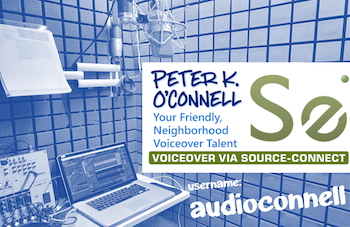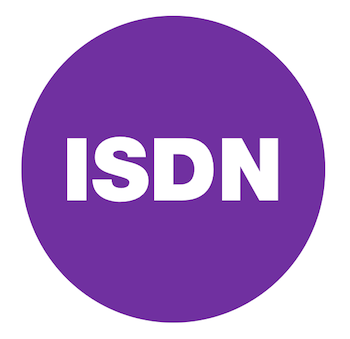source-connect is the standard and i’m a standard bearer (that means i have source-connect in my voiceover studio)
 There are nice things about being in a club.
There are nice things about being in a club.
I’m not talking about the leather-chair, cigar smoking clubs out there (I’ve been members at those kind of clubs…they are not that big a deal).
I’m mean like clubs where members share a common interest and can talk about things you each know about and, as a member, you can learn from people who share your interests…like audio production and voiceover. Turns out there’s a kind of club for that.
Technology brought a lot of change to the industry, some of it bad (pay to play voiceover web sites) and some of it good.
One of the good things was Source-Connect, which uses codecs and the internet to offer recording studios, media producers, voiceover talents like me and other audio professionals high-quality options to record and monitor recording sessions remotely.
 Source-Connect is (has been) replacing ISDN, which was the industry standard for remote recording. ISDN always sounds great, no doubt about that. The down side of ISDN is that it was expensive to connect to ISDN studios with over priced codec boxes and copper wiring via the telephone company’s system to make recording sessions happen.
Source-Connect is (has been) replacing ISDN, which was the industry standard for remote recording. ISDN always sounds great, no doubt about that. The down side of ISDN is that it was expensive to connect to ISDN studios with over priced codec boxes and copper wiring via the telephone company’s system to make recording sessions happen.
After a while, between criminals in the street trying to steal expensive copper wiring and criminals at the phone company jacking the ISDN rates up (because they didn’t want to support an unprofitable service like ISDN)…studios and talent needed a new remote audio recording tool.
Enter Source Elements and Source-Connect. The faster the internet got, the better signals got – Source-Connect allows super high quality remote audio recording with extremely low latency (if any at all).
Studios anywhere in the world can connect with me on Source-Connect (username: audioconnell) and the recording can be voiced by me here in Raleigh, NC voiceover studio and recorded on the other end (again, anywhere in the world) if they also have Source-Connect.
Oh, and with Source-Connect, a connection can be bridged to an ISDN recording studio if the studio only has or prefers ISDN. So I am still ISDN compatible, without the expense on my end.
That’s why I am a card carrying member of the Source-Connect club. The service makes it easier for my clients and it also make it easier for me.
Easy is the new black.
If you’d like to record with me using Source-Connect, just let me know. Voice with you soon!




